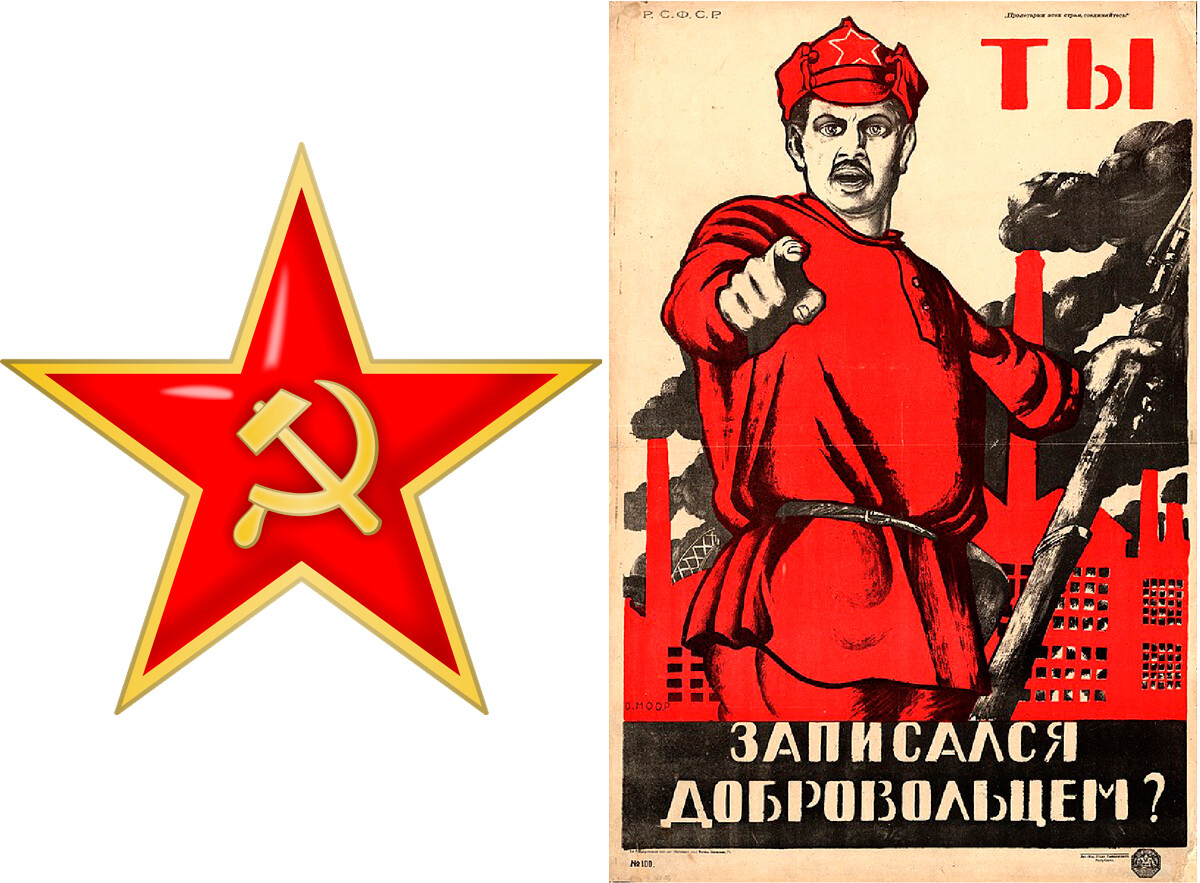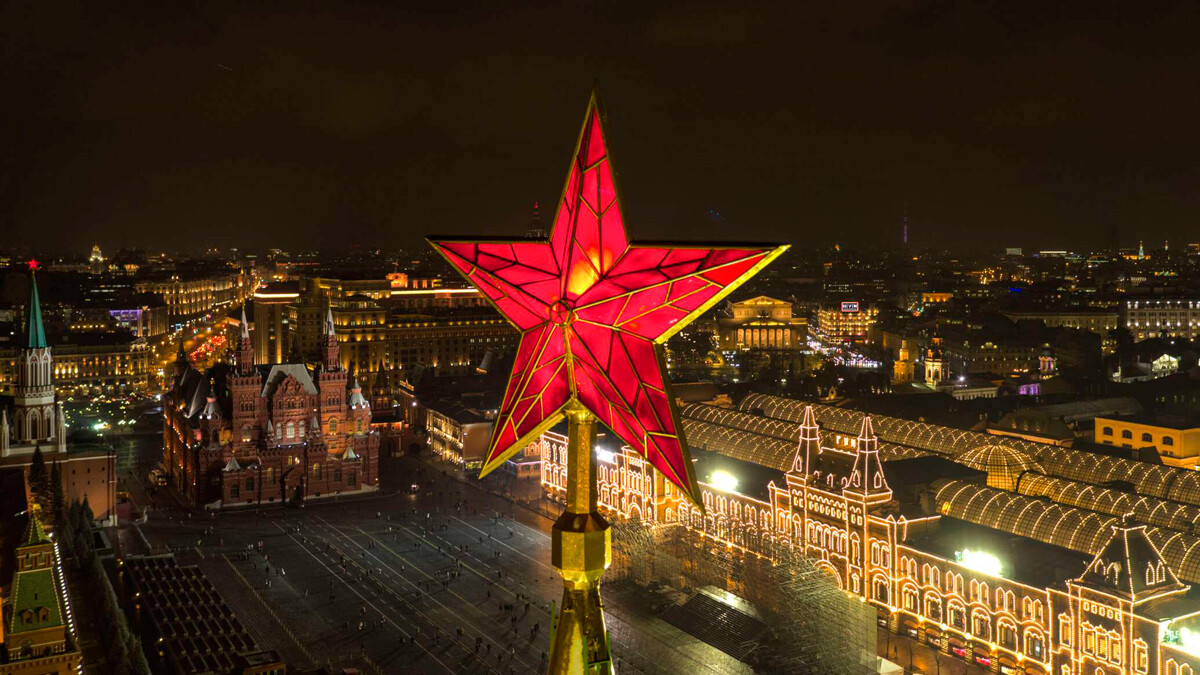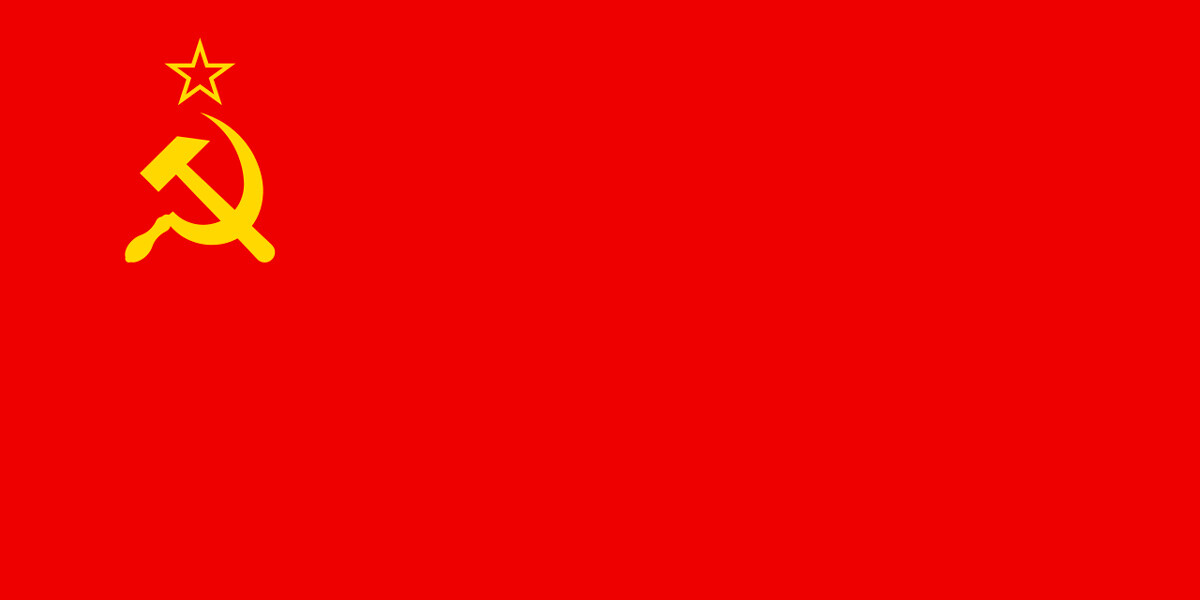
It all started even before the Soviet state was officially formed. The ‘Red guard’ was a volunteer armed group that supported the Bolsheviks. Just after they seized power during the 1917 Revolution, the Workers’ and Peasants’ ‘RED Army’ was established, which supported the Bolsheviks in the Civil War, in their fight for power against the White Army of monarchists. Red Army was the official title for the country’s armed forces until 1946, when it was renamed into the ‘Soviet Army’.

The Soviet Army symbol and the famous Civil War propaganda poster - Have You Volunteered?
Public domainNo surprise that the symbol of the army was a red five-pointed star. Originally, it was a symbol of Mars, the Roman god of war, so it was used as heraldic in armies of several countries, including the United States (the red star was the national insignia of any type used by U.S. military aircraft, used in 1916-1917 in the Mexican Expedition). The late Russian Empire’s army also used a star, but a yellow one, featuring the double-headed eagle state symbol inside of it.
So, the red star appeared on the uniform of the Red Army - and then just everywhere. Red stars also replaced the gilded eagles on Kremlin towers in the 1930s.

A star atop of the Moscow Kremlin's towers
Alexey Druzginin/Anton Denisov/Russian Presidential Press OfficeRed stars were then placed atop of the Soviet New Year trees. Red stars were even put on gravestones instead of christian cross.
Red has another sense of still brutal meaning. Since the 1789 French Revolution, red was considered as the color of revolution, the color of blood shed by the people in their struggle for freedom. The red banner was used many times in different countries.

Henri Félix Emmanuel Philippoteaux. Lamartine rejects the Red Flag before the Hôtel de Ville in 1848
Petit PalaisThe Bolsheviks had to get rid of all the Imperial symbols and colors (including the double-headed eagle and the national Russian white-blue-red flag) and they had to invent new strong signs to replace them with.
The red banner became “a symbol of state sovereignty of the USSR and the unbreakable union of workers and peasants in the struggle to build a communist society”. It contained the hammer and sickle emblem (union of the working class and the peasantry) and the red five-pointed star that was explained as “a symbol of the ultimate triumph of the ideas of communism on the five (inhabited, that is, excluding Antarctica) continents of the globe”.
The red flag was the Soviet official symbol until its collapse in 1991 and became the symbol of communism as a whole. Countries of the Eastern Bloc, where the USSR had a big influence, also had red colors in their flags (or even red stars), while flags of such countries as China, Vietnam and North Korea still have allusions to the Soviet red flag.

In Sovietology, a science researching Soviet history and its influence on the world’s order, there is a term ‘Red Empire’ or ‘Soviet Empire’. The red empire and the Eastern Bloc of the countries in its field of influence were, of course, opponents of the “capitalist” countries in the Cold War… And it was primarily the U.S. who called the Soviet Union an ‘Evil Empire’.
Dear readers,
Our website and social media accounts are under threat of being restricted or banned, due to the current circumstances. So, to keep up with our latest content, simply do the following:
If using any of Russia Beyond's content, partly or in full, always provide an active hyperlink to the original material.
Subscribe
to our newsletter!
Get the week's best stories straight to your inbox